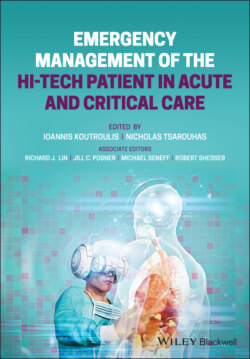Читать книгу Emergency Management of the Hi-Tech Patient in Acute and Critical Care - Группа авторов - Страница 52
Metabolic Derangements
ОглавлениеPatients with ileostomies are at higher risk for metabolic derangements due to the larger volume of effluent that is produced daily. The normal adult output is 500–1300 ml/day, which may be increased in the setting of obstruction, infectious enteritis, bacterial overgrowth, and dietary indiscretion such as diets high in sugar, salt, and fat. High stoma output can lead to hyponatremia, hypokalemia, and hypomagnesaemia. If more than 60–100 cm of the terminal ileum is resected, malabsorption of fat and vitamin B12 can occur. The initial evaluation for high stoma output includes obtaining a set of electrolytes such as magnesium and phosphorous; a complete blood count to assess for anemia; a two‐view abdominal x‐ray; stool studies for Clostridium difficile, ova and parasite and bacterial culture; and obtaining a detailed diet history. Management of high stoma output includes identifying and treating the underlying cause. Patients with Crohn's disease may present with increased output as a sign of an acute flare, and gastroenterology consultation should be obtained for these patients. If the electrolytes are normal, and the patient is well hydrated and hemodynamically stable with a benign abdominal exam, the patient may be discharged home with instructions to increase their fiber intake and decrease their intake of sugar, salt, and fat. For patients with metabolic derangements, dehydration, or other concerns, intravenous fluids, electrolyte replacement, and bowel rest are the initial steps. Once the patient is stabilized, long‐term management of high stoma output may include antidiarrheal agents including loperamide, oral fluid restriction, dietary salt supplementation, H2 antagonists, and proton pump inhibitors. Patients with ileostomies are also predisposed to kidney stone formation due to their state of chronic mild dehydration and acidic urine.
